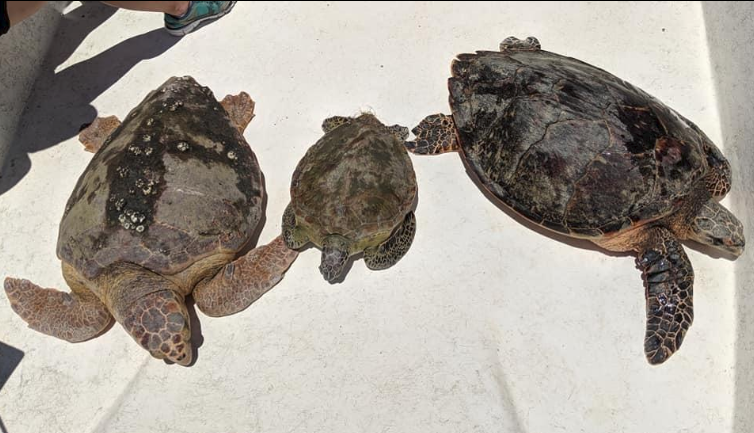Florida sea turtle researchers have encountered one of the rarest of all sea turtles, far away from where the turtles usually are seen.
Sea turtle researchers working in the Indian River Lagoon have encountered one of the rarest of all sea turtles, far away from where the turtles are normally seen.
It’s only the second time that researchers with the University of Central Florida’s Marine Turtle Research Group have seen a hawksbill turtle in the lagoon during more than two decades of research.
On an exciting first day for a new group of interns, the researchers briefly captured the hawksbill in Brevard County while netting for a long-term federally permitted project.
--> Join the conversation in Vero Beach Foodie and 46,600 very active members right now! <--
--> Subscribe to our weekly email and discover all the local events and happenings around the town. Join 26,650 of your neighbors right now! <--
“We found the hawksbill just south of (Sebastian) Inlet,” said Kate Mansfield, associate professor and director of the turtle research group.

She estimates they were about a mile south of the boat ramp at Sebastian Inlet State Park on the east side of the Lagoon.
“Hawksbills are the rarest of all sea turtles that nest in Florida,” Luciano Soares, one of the lead sea turtle biologists for the Florida Fish and Wildlife Conservation Commission, wrote in an email.
The majority of the hawksbills lay their nests in the Florida Keys, said Soares.
Only 54 nests have been documented since 1979, said Michelle Kerr, a spokeswoman for the commission. Over the past five years, seven nests have been recorded, six in the Keys and one in Palm Beach County.
The UCF research group monitors the populations of turtles that forage in the lagoon, as well as the sea turtles that nest along the beach in the Archie Carr National Wildlife Refuge.
This spring the group launched a new genetic research project with Mansfield and UCF biologist and genetics expert Eric Hoffman.
They hope to use the information about the genetic structure of the sea turtles to better understand the origin of the juvenile turtles that forage in the lagoon and how nesting populations are connected. The data could also help determine whether local foraging juveniles come from Florida nesting beaches or nesting beaches from afar.
This story originally published to news-journalonline.com, and was shared to other Florida newspapers in the GateHouse Media network.
- Vero Vine Top 9 Home Cleaning Services - February 18, 2025
- Vero Vine Top 9 Hair Salons - February 18, 2025
- Vero Vine Top 9 Waterfront Eateries - February 12, 2025

